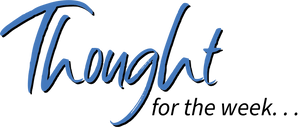Coach Student Reflection with This Surprisingly Powerful Tool
Not everything that is relevant today is new. Also, not everything that is useful with students originated in education. An excellent example of this observation is a reflection process developed for healthcare professionals several decades ago. Despite how long it has been around, it remains a useful tool to stimulate and guide reflection activities. It is deceptively simple, but surprisingly powerful. The process consists of just three questions:
- What?
- So what?
- Now what?
This question sequence provides a useful way to organize thoughts, consider implications, and decide next steps. The reflection process works by breaking down information into useful parts. It also clarifies relevance of the topic being considered. Finally, it encourages individuals to take action because of the reflection.
We can use the reflection tool to help students reflect on and learn from conflict, missteps, or misbehavior. Students might use this tool to understand the significance of their effort and persistence in the face of an academic challenge, or to help them reflect on and better understand their behavior in a relationship. Let’s unpack these questions and explore how they might be used to guide and support student reflection activities regardless of topic, subject, or experience.
“What?” focuses on the experience, event, or interaction. In the first step, students describe what happened. They isolate the facts of the matter by recounting what they observed. Students may describe an assignment or project they were engaged in. They may reflect on an event in which they participated. They may recount a conversation, argument, or something they heard. They also detail the role they played in what happened.
Our coaching role during this step of the reflection process is to have students be clear, concrete, and concise. The key is to help students begin their reflection with reality, not what they assume or imagine.
“So what?” engages students in interpreting, analyzing, and contextualizing what happened. In the second step, students describe why the experience, event, or interaction was important. They may discuss why they reacted as they did. They might recount how they felt as the situation unfolded. They may even provide context that explains why they found the experience to matter. Further, students might provide history of a relationship, a struggle to complete a task, or an analysis of their behavior. Finally, this step asks students to consider what they learned through the experience.
Our coaching in this step is to help students to recall what they felt, how they reacted, and what they learned. We may need to ask nudging questions to help students find their way through emotions, assumptions, and other distractions that get in the way while making sense of what they experienced.
“Now what?” focuses student attention on the implications of the experience and future actions. In the third step, students ask themselves what they would do differently if they encountered the same circumstances, challenges, or interactions in the future. They might draw on what they discovered in the second step of the process to determine how they can adjust their thinking and behavior. Students also may find that there are skills and information they need to learn to help them complete this phase. Depending on the situation, students may plan the next steps they will take to resolve the situation or how they will reengage in a project or task. They might even develop a script to use in resolving a conflict.
Our coaching at this stage of the process is to encourage commitment and to help students define, determine, and deploy the steps or strategies they will use to move forward. Students may need our insights and ideas to help them figure out what they will say and what actions they will take.
These three questions may seem simple—even obvious. However, when deployed with thought and commitment, they can generate powerful insights and lead to significant changes in thinking and behavior.






